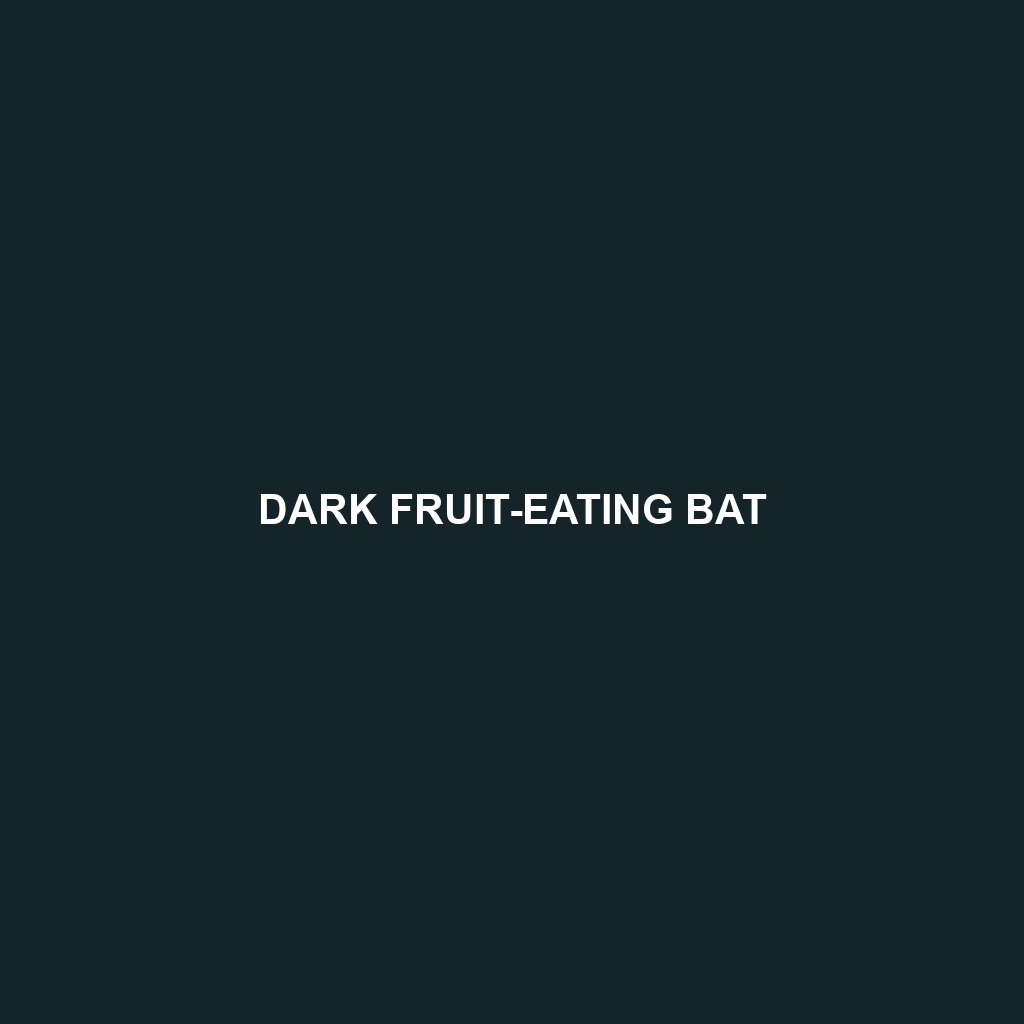Great Fruit-eating Bat
Common Name: Great Fruit-eating Bat
Scientific Name: Artibeus lituratus
Habitat
The Great Fruit-eating Bat is primarily found in the tropical and subtropical regions of Central and South America. Its natural habitats include dense rainforests, wet lowland forests, and transitional forests. This species prefers areas with abundant fruit-bearing trees, allowing them to thrive in ecosystems rich in biodiversity.
Physical Characteristics
Measuring approximately 10 to 12 inches in body length, the Great Fruit-eating Bat has a wingspan that can reach up to 3 feet. The bat is characterized by its broad, rounded ears and large, dark eyes that provide excellent night vision. Its fur is typically a rich brown or reddish-brown color, with lighter underparts. Notable features include its pronounced muzzle and robust body, making it easily distinguishable from other bat species.
Behavior
The Great Fruit-eating Bat is primarily nocturnal, emerging at dusk to forage for food. They are known for their agile flight and keen sense of smell, which they use to locate ripe fruits. Socially, these bats often roost in large colonies in trees or caves, facilitating communication and social interactions. They exhibit fascinating behaviors, including an intricate vocal communication system used during mating displays and territorial disputes.
Diet
This species is predominantly frugivorous, meaning their diet consists mainly of fruits. They have a preference for figs, bananas, and various berries, which they help to pollinate and disperse through their feeding habits. Great Fruit-eating Bats are also known to consume nectar and pollen from flowers, contributing to the health of their ecosystem by promoting plant reproduction.
Reproduction
Great Fruit-eating Bats typically breed once a year, with mating occurring during the wetter months when food is abundant. After a gestation period of around 3 months, females give birth to a single pup, which they nurture for several weeks before it can fly independently. Maternity colonies provide a safe environment for mothers and their pups, where they can socialize and care for their young collectively.
Conservation Status
Current assessments classify the Great Fruit-eating Bat as Vulnerable due to habitat loss caused by deforestation and urbanization. Conservation efforts are needed to preserve their natural habitats and ensure their population remains stable.
Interesting Facts
The Great Fruit-eating Bat has a unique adaptation that allows it to consume fruit without damaging the seed inside, thus playing a crucial role in seed dispersal. Additionally, their ability to consume fruits at night helps in avoiding competition with daytime frugivores.
Role in Ecosystem
In the ecosystem, the Great Fruit-eating Bat plays an essential role as a pollinator and seed disperser. By feeding on a variety of fruits, they aid in the growth of new plants and maintain the health of their habitats. Their interactions with other species, including plants and fellow frugivores, highlight their importance in maintaining biodiversity and ecosystem balance.
